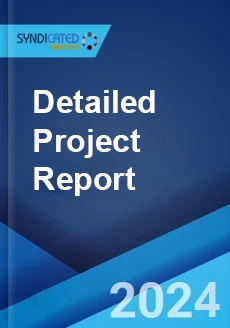
Hemodynamic Monitoring Market - Global Industry Analysis, Market Size, Share, Trends, Application Analysis, Growth and Forecast, 2023-2028
“Global Hemodynamic Monitoring Market - Industry Analysis, Market Size, Share, Trends, Application Analysis, Growth and Forecast, 2023-2028” provides a deep and thorough evaluation of the global Hemodynamic Monitoring market. Hemodynamic monitoring refers to the measurement of pressure, flow, and oxygenation of the blood within the veins, heart, and arteries. It facilitates the analysis and optimization of hemodynamic parameters and oxygen delivery. It is widely used for clinical examination of cardiovascular health, longevity, and quality of life of patients undergoing or recovering from surgery. It aids in the early diagnosis, treatment, and continuous monitoring of various cardiopulmonary conditions. It also helps improve patient outcomes and combat tissue hypoxia, shock, and multiorgan failure in critically ill patients. As a result, hemodynamic monitoring finds extensive applications across the healthcare industry.
The global hemodynamic monitoring market is primarily driven by the surging number of individuals suffering from cardiac dysfunction, which leads to hemodynamic instability and organ failure. Besides this, the expanding geriatric population that is more susceptible to developing such health conditions represents another major growth-inducing factor. Additionally, the rising incidences of lifestyle diseases, such as diabetes, obesity, stroke, hypertension, and heart disorders, have strengthened the need for routine assessment of hemodynamic parameters. In line with this, the shifting preferences toward home-based and non-invasive monitoring systems among patients and healthcare professionals have augmented the demand for hemodynamic monitoring. Furthermore, the leading manufacturers are introducing easy-to-use, portable, and minimally- and non-invasive hemodynamic monitoring systems at affordable prices to provide more accurate results and information about a wide range of variables, including blood pressure, blood volume, and fluid balance. In line with this, recent technological advancements, such as the development of innovative devices that offer uncalibrated cardiac output (CO) measurements obtained through the analysis of a non-invasive arterial pressure waveform, have catalyzed market growth. Other factors, including the increasing number of surgical procedures, implementation of favorable government initiatives to decrease healthcare costs, ongoing research and development (R&D) activities, improving healthcare infrastructure, and increasing regulatory approvals for monitoring devices, are also anticipated to propel market growth.
Beginning with a global overview, the report explores the dynamics that have a strong influence on the Hemodynamic Monitoring market and can also impact its future growth. Taking 2022 as the base year, the report covers historical market scenario from 2017-2022 and provides forecasts till 2028. This includes the study of value and volume trends and pricing history. Growth inducing factors, market restraints and recent developments have also been analysed in the report in order to provide a deeper knowledge about the industry. On a regional basis, the report examines the Hemodynamic Monitoring market in North America, Europe, Asia-Pacific, Latin America and Middle East & Africa. For each of these regions, the report studies the Hemodynamic Monitoring market in detail for latest trends, outlook and opportunities.
The report analyses the competitive structure of the Hemodynamic Monitoring Industry and provides the profiles of major players operating in the market. The price margins for the products along with the various success and risk factors for manufacturers have also been covered in the report. Moreover, in order to determine market attractiveness, the report analyses the Hemodynamic Monitoring Industry along the parameters of the Porter’s Five Forces model. This model examines the degree of competition in the Hemodynamic Monitoring Industry by analysing the threat posed by new entrants and substitutes, and the bargaining power of suppliers and buyers. SWOT analysis of the market has also been presented in the report which highlights the strengths, weaknesses, opportunities and threats pertaining to the Hemodynamic Monitoring Industry. Furthermore, the value chain analysis of the Hemodynamic Monitoring Industry has also been covered in the report. This comprises of all the activities in the value chain, such as the procurement of various raw materials, manufacturing, sales and distribution.
Key Segments and Highlights of the Global Hemodynamic Monitoring Market
- Historical and current scenario
- Trends and developments
- Market forecast
- Price analysis and forecast
- Porter’s five forces analysis
- SWOT analysis
- Value chain analysis
- Market Breakup by Type
- Market Breakup by End-Use
- Market Breakup by Region
- North America
- Europe
- Asia-Pacific
- Latin America
- Middle East & Africa
- Key players
The report is a result of exhaustive primary and secondary research undertaken by analysts having years of experience in the Hemodynamic Monitoring Industry. All the qualitative and quantitative aspects of the industry have been covered and the collected data has been analysed and presented in the form of easily comprehensible charts, graphs and tables.
Purchase Options
Ask For Customization
Personalize this research
Triangulate with your own data
Get data as per your format and definition
Gain a deeper dive on a specific application, geography, customer or competitor
Any level of personalization
Get in Touch
Call us on
US: +1-213-316-7435
Uk: +44-20-8040-3201
Drop us an email at
sales@syndicatedanalytics.com